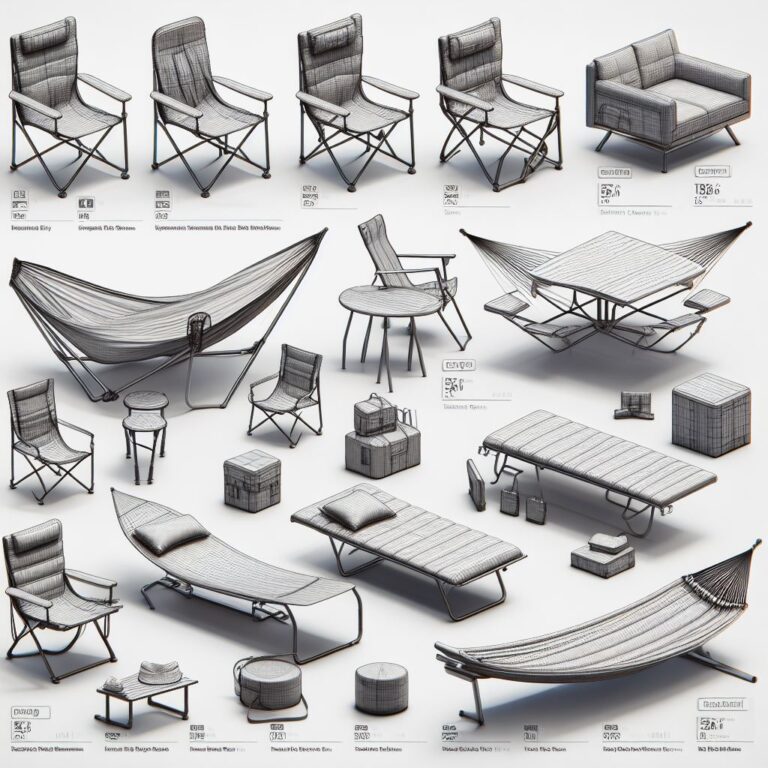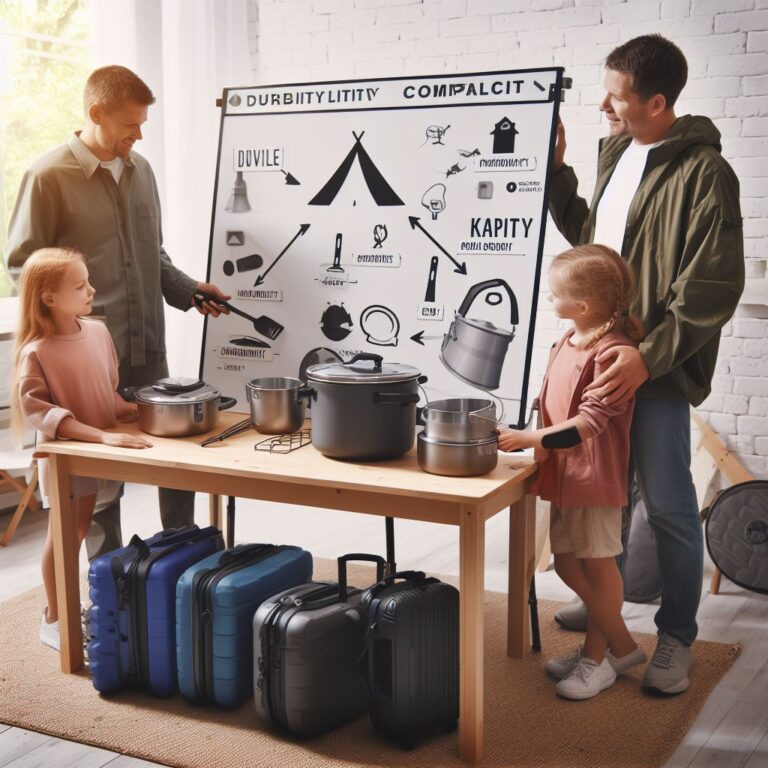Understanding the Importance of Comfortable Camp Bedding
Outdoor camping is an adventurous pursuit that provides immense scope for exploration and leisure activities. However, it also poses certain challenges related to comfort, mainly regarding sleep. A good night’s rest is crucial for regaining energy and ensuring full readiness for the upcoming day’s expedition. Thus, comfortable camp bedding plays a pivotal role in enhancing the overall camping experience.
Quality camp bedding not only guarantees sound sleep, but also wards off problems like backache or stiff neck that undesirable sleeping conditions may induce. Correctly chosen camp bedding also aids in tackling the harsh weather conditions of the wilderness effectively, providing insulation during cold nights and cooling effect during warm nights. Therefore, investing in quality camp bedding is equally vital for both occasional and regular campers.
Evaluating Different Types of Camp Bedding
Camping is an exciting adventure, but the comfort of your sleep can greatly influence the overall experience. Therefore, understanding and evaluating different types of camp bedding is a critical step towards making your outdoor adventure even more enjoyable. The vast myriad of choices can appear daunting, ranging from the conventional camping mats, sleeping bags, and air mattresses, to more comfortable options such as camping cots and hammocks. The right choice depends on several factors including personal comfort needs, travel conditions, and environmental elements you expect to encounter.
When it comes to evaluating camping mats and sleeping bags, these are typically the most portable options. They are lightweight and easy to carry, making them suitable for backpackers. A camping mat offers basic comfort by providing a cushion between the sleeper and the ground, while sleeping bags also provide warmth. Air mattresses, on the other hand, are designed to provide greater comfort and are a close replication of a bed. The elevated sleeping surface shields you from the cold ground, but they require an air pump for inflation and are not the best for hiking trips due to their bulk. Alternatively, camping cots and hammocks offer a luxurious sleep option, providing an off-the-ground sleeping experience. These, however, require a considerable amount of storage space and are often heavier, making them less convenient for long treks.
Assessing Your Personal Sleeping Needs
Prior to setting forth on any camping expedition, it is vital to understand one’s personal sleeping preferences and requirements. Recognizing your sleep needs is a precursor to selecting the suitable camp bedding and ensures a comfortable sleep while adventuring outdoors. Every individual has unique preferences, some people might be side sleepers requiring extra cushioning while others might be back sleepers who need firmer support. Hence, it becomes even more important to choose a camp bed that aligns with your comfort levels and provides the right kind of support.
If you generally lean towards a certain firmness in your mattress at home or have medical conditions that necessitate the use of orthopedic bedding, you should keep these factors in mind while scouting for camping bedding. Familiarize yourself with the different options available in the market. Do you prefer air sleeping pads, self-inflating pads, or closed-cell foam pads? Understanding the specifics of each variety will help you come to a well-informed decision that optimizes comfort for your camping nights. Remember, lack of proper sleep can result in fatigue and put a damper on your daytime activities, so prioritize this aspect while planning your camping gear.
Factor in the Weather and Season
The changing patterns of weather and seasonal variations are critical aspects that should not be overlooked when selecting camping bedding. Certain bedding types are designed to adapt to specific conditions and can bring significant changes to the camping experience, while others might leave you wanting for comfort or warmth. For instance, the summer season generally demands camp bedding that’s light in weight and breathable, to prevent uncomfortable, sweaty nights. On the contrary, winter trips involve needs for sturdy, insulated, and heat-retaining material in sleeping bags or blankets.
Cold weather camping focuses heavily on maximum insulation, while warm weather trips favor breathability and moisture-wicking materials. If you’re camping in rainy seasons, water-resistance should be at the top of your list, where a quick-drying feature can come most handy. All-weather sleeping bags and beds are available for those who prefer camping in all seasons. By taking these factors into consideration, one can ensure their camping experience is not hampered by discomfort in changing environmental conditions.
Consider the Size and Weight of Camp Bedding
When selecting camp bedding, the size and weight can play a pivotal role in how comfortable and practical it is for your particular camping experience. For the backpacking enthusiast, choosing lightweight, compact bedding can significantly reduce burdensome weight and ensure efficient packing. On the other hand, a family on a car camping adventure has the luxury of considering larger, heavier options that provide more substantial cushioning and comfort.
In terms of size, it’s vital to select bedding that suits your body adequately. A too-small sleeping bag or mat, for instance, may not provide sufficient warmth and comfort, resulting in a rough night’s sleep. A too-large bedding setup, on the contrary, might unnecessarily occupy valuable tent space or becomes difficult to transport. Thus, identifying your individual needs and circumstances before purchasing can lead to a more satisfying camping experience.
Insulation and Warmth: Key Features for Camp Bedding
For camping enthusiasts and outdoor adventurers, an essential factor to consider when choosing camp bedding is its insulation and warmth. The core purpose of camp bedding is to provide a comfortable and warm sleeping surface when braving the colder nights in the great outdoors. Thus, the level of insulation is directly tied to the warmth of the bedding; the higher the insulation, the warmer the bedding.
Different materials used in camp bedding offer varying degrees of insulation. Synthetic materials, such as polyester, are affordable and provide effective insulation even when wet. In contrast, natural down is lightweight, easy to compress, and offers superior warmth, but fails to provide insulation when damp or wet. A balance between insulation, warmth, mobility, and your specific camping environment should guide your choice of camp bedding. Both materials have their pros and cons – and ultimately depend on the individual’s camping needs and preferences.
Maintenance and Durability of Camp Bedding
Taking care of camp bedding material can significantly increase its life-span. Maintenance involves cleaning and proper storage to prevent unnecessary degradation or the development of mildew and unpleasant odors. The better you look after your bedding, the longer it will serve you. Most bedding items can be easily cleaned with a gentle soap and warm water, but always to remember to thoroughly dry them out before storing for extended periods.
Durability, on the other hand, depends largely on the quality of the material and construction of the bedding. High-quality, durable camping bedding is designed to withstand tough environmental conditions and frequent use. The seams should be strong and the materials used should be resistant to wear and tear. Robust bedding will not easily succumb to rips, allowing you to make the most of your investment. Carefully examine product reviews and warranties to gauge a bedding item’s durability before purchase.
Price and Budget Considerations for Camp Bedding
When planning any camping trip, it’s crucial to factor in the cost of quality camp bedding into your budget. There is a wide range of products catered to different price points, with each offering varying levels of comfort, durability, and convenience. While it might be tempting to skimp on expenses, remember that a good night’s rest is invaluable, and a reliable camping mattress or sleeping bag directly contributes to this.
Surprisingly, you don’t need to empty your wallets to find satisfactory camp bedding. Some affordable options can give you both comfort and durability if you know where to look and what to look for. However, you might want to invest in a higher-priced item if you’re a regular camper or require specific features related to the climate, your sleeping style, or any physical conditions. Regardless, it’s all about finding the right balance between price and the value offered.
Top Camp Bedding Brands to Consider
When you’re out exploring the great outdoors, the quality of your camp bedding can play a significant role in how much you enjoy your trip. Some camping enthusiasts swear by certain brands, convinced they offer unsurpassed comfort and durability. For instance, Therm-a-Rest has been a trusted name in the camping community for decades, known for their self-inflating air mattresses that provide superior support and insulation. They offer a broad spectrum of options, from ultralight pads for backpacking to luxurious models for car camping.
Another noteworthy brand is the outdoor giant, REI. Renowned for their commitment to quality and durability, REI’s selection both in sleeping bags and camping pads is impressive. They have got something to suit every type of camper. From lightweight alternatives for the greatest of minimalists to spacious sleep systems perfect for a family camping trip. Not to mention, their commitment to sustainability and ethical manufacturing practices adds an extra layer of value to their merchandise.
Helpful Tips for Maximizing Comfort in Camp Bedding
Choosing the right camp bedding can significantly upturn the quality and comfort level of your camping experience, regardless of the nature of your outdoor adventure. It is, therefore, crucial to select a camp bedding tailored to your needs while taking into account factors like the weather, camping duration, and personal comfort preferences. For instance, choosing a thicker or double-layered camp bedding can provide additional warmth and comfort during colder seasons. Always be aware of the dimensions of your tent to ensure the bedding will fit properly.
To further maximize your comfort, consider investing in a high-quality sleeping pad or an air mattress. They not only provide added cushioning from the tough ground surface but also offer excellent insulation from the cold. Additionally, using a sleeping bag liner can help maintain the cleanliness of your camp bedding, prolong its lifespan and offer an extra layer of warmth. Remember, a good night’s sleep is pivotal for energy replenishment so; always ensure your camp bedding choice guarantees maximum comfort.
Why is comfortable camp bedding important?
Comfortable camp bedding is essential for ensuring a good night’s sleep while camping. It can help you recover from the day’s activities, keep you warm, and even protect your body from the hard ground.
What are some different types of camp bedding?
Camp bedding can range from simple sleeping bags to inflatable air mattresses, self-inflating pads, foam pads, and even camping cots or hammocks. Each type has its advantages and disadvantages, depending on factors like comfort, weight, insulation, and price.
How do I assess my personal sleeping needs for camping?
Consider your sleeping habits at home. If you prefer a firm surface, you may favor a foam pad or cot. If you like softness, an air mattress or thickly padded sleeping bag may be better. Also, think about any physical conditions that may affect your comfort, such as back or joint issues.
How does the weather and season factor into choosing camp bedding?
In colder seasons, you’ll need bedding with better insulation to keep you warm. In warmer weather, you may prefer a lighter sleeping bag or air mattress for ventilation. Always check the temperature rating of the bedding before purchasing.
What should I consider in terms of size and weight for camp bedding?
The size and weight of your bedding can impact your camping experience, particularly if you’re backpacking or hiking to your campsite. Lighter, compact options are often best for these situations, while you can opt for larger, heavier bedding if you’re car camping.
What should I look for in terms of insulation and warmth in camp bedding?
Look for a temperature rating that suits the weather conditions you’ll be camping in. Also, consider the type of insulation—synthetic or down. Synthetic insulation typically performs better in wet conditions, while down is lighter and compresses more for packing.
How can I ensure my camp bedding is durable and easy to maintain?
Look for bedding made of durable materials that can resist tears and wear. Additionally, bedding that is easy to clean and dry will be more convenient in the long run.
How much should I expect to spend on comfortable camp bedding?
The price of camp bedding can vary greatly depending on the type, brand, and features. You can find budget-friendly options under $50, mid-range options between $50-$150, and high-end options that exceed $150. Always prioritize your comfort and needs over price.
What are some top brands for camp bedding?
Some top brands include Therm-a-Rest, Sea to Summit, REI Co-op, NEMO, and Big Agnes. These brands are known for their quality, durability, and comfort.
Do you have any additional tips for maximizing comfort in camp bedding?
Yes, consider bringing a pillow or a pillowcase you can stuff with clothes for extra head support. Also, adding a sleeping bag liner can increase warmth and comfort. Finally, practice setting up your bedding before your trip to ensure it’s comfortable and functional.
- Floating Stone Lake Recreation Area – AB - March 14, 2024
- Katherine’s Camping Corner – Athabasca, Alberta - March 14, 2024
- Prairie Peaks Campground – Hill Spring, Alberta - March 13, 2024





